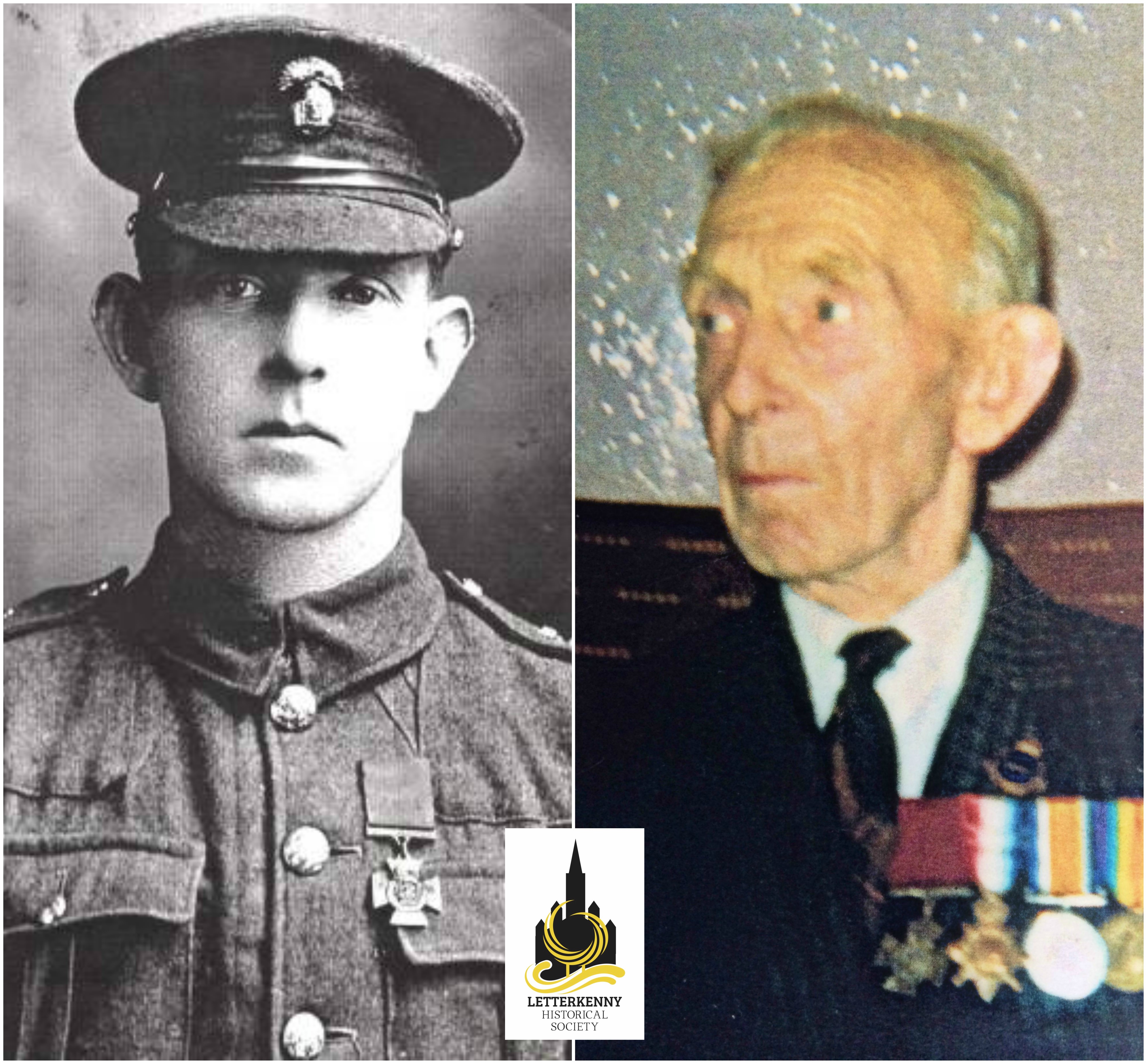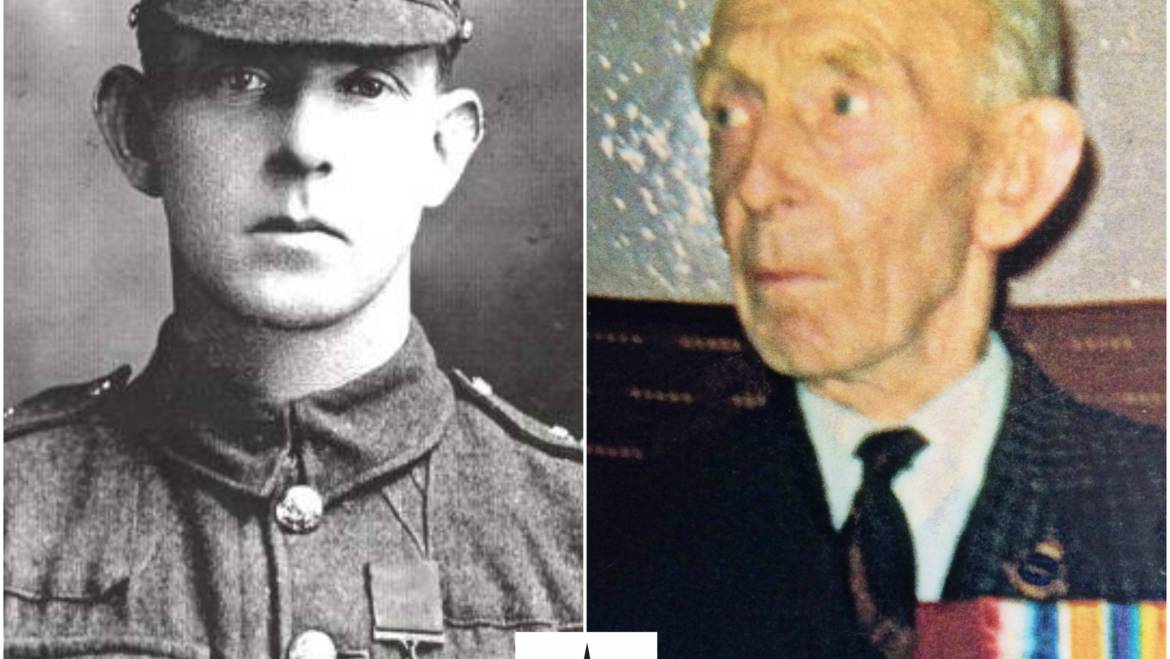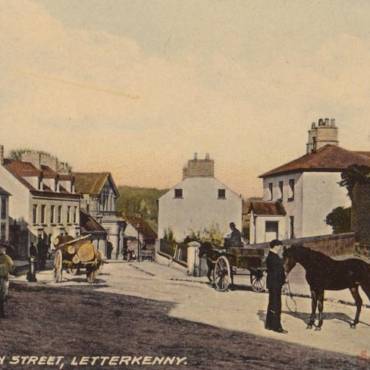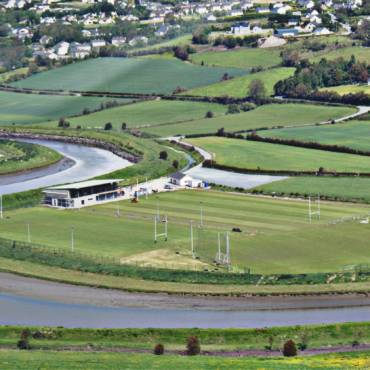James Duffy, VC, 1889-1969
I wish that I were back again in the glens of Donegal,
They’d call me a coward if I return but a hero if I fall!
These are the words of Donegal poet and writer, Patrick McGill when he was serving with the London Irish Rifles during World War 1. McGill was born in Glenties and he was one of the 8,000 Donegal men who fought in this terrible conflict. Many men from Letterkenny answered the call to arms also, including those that were living overseas when the war broke out.
Against the backdrop of the war in Europe, this period was also a defining moment in the history of the modern Irish State. When those who had enlisted in 1914 returned to their homes and families in 1918, they found that the perception of Irish nationality had been ‘changed utterly’ by the events of Easter 1916. The rising republicanism in the country and the actions of the British army in Ireland during the War of Independence created an antipathy towards the combatants in the years following their return home. As a result, they were, by and large, shunned and castigated by their fellow Irishmen for daring to serve in the army of ‘the enemy’. Sadly, this treatment occurred in Letterkenny also, just as it did in towns and cities throughout the country.
200,000 men from Ireland fought in World War 1 (plus 300,000 Irish immigrants or people with Irish parents). Of these numbers who enlisted, somewhere between 35,000 and 50,000 Irishmen never returned home, including 1,200 from Donegal and approximately 91 from the Letterkenny area.
From Letterkenny, the youngest man to die was aged just 17 (Albert Mills Knipe from the Main Street) while the oldest was 46 (Jeramiah McDaid from Crieve). Eight men from the town died in the Battle of the Somme between July and November 1916, four of them on the very first day of the battle. From what we know, fifty Letterkenny men are buried in France, twenty-one in Belgium and eight in Turkey. Many from the same family enlisted and lost their lives also such as David and Robert Dobson from Ballymacool, Charles and Paddy Doherty from Asylum Road, Hugh and John McKelvey, Charles and John Stewart of Rockhill House and Daniel, James and John Doherty from Sentry Hill.
Although 91 people died, following the war, many others from the Letterkenny district were able to return safely home following their harrowing experiences in the trenches, such as James Duffy, Charlie Collins, Eddie Greene, Peter Duffy and James Roarty while others came to live in the town following the war such as Tom McClintock and Fr. William MacNeely. These men and many others did not wish to talk about their experiences and for many years afterwards remained silent about what they had witnessed.
James Duffy was one of only thirty-seven Irishmen who received the Victoria Cross (VC), the highest military decoration awarded for valour in the face of the enemy, during his service in World War 1. Duffy was born on 17th November 1889, the son of Peter Duffy from Bonagee and Kate Doogan of Gweedore. Like so many Irishmen at the time, he was working in a Glasgow shipyard when he joined the Iniskilling Fusiliers upon the outbreak of the war. One hundred years ago this year, on the 27th December 1917 at Kereina Peak in Palestine, despite heavy gunfire and bombing, Private Duffy ran out to the area under attack with another stretcher-bearer to rescue an injured comrade. When his partner was wounded by the gunfire, Private Duffy, under very heavy fire from the enemy, succeeded in getting both of the wounded men to safety and attended to their injuries. His bravery in the face of such an onslaught earned him the award of the Victoria Cross.
On his return to Letterkenny after the war, his gallant bravery on the battlefield largely went unnoticed by his fellow townspeople, a casualty of a change in attitudes following the events of 1916. He was treated with suspicion in the town and rarely mentioned his Victoria Cross when he was working at Ballyraine Port unloading coal boats. In 1964, he sold the medal to the Royal Iniskilling Museum for £1 per week until his death but a replica can still be seen in the County Museum. James Duffy died on 7th April 1969 at the age of seventy-nine and he is buried in Conwal cemetery while a memorial to his bravery stands in the Bernard McGlinchey Town Park and a plaque was erected on Castle Street by the Ulster History Circle on November 10th 2017.




